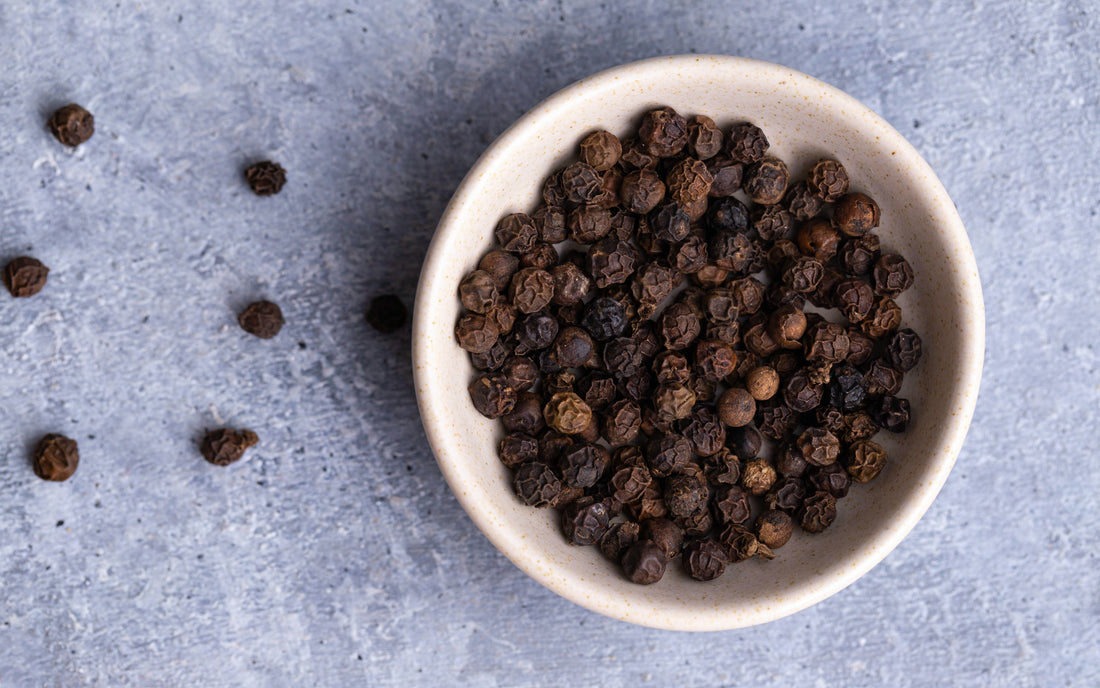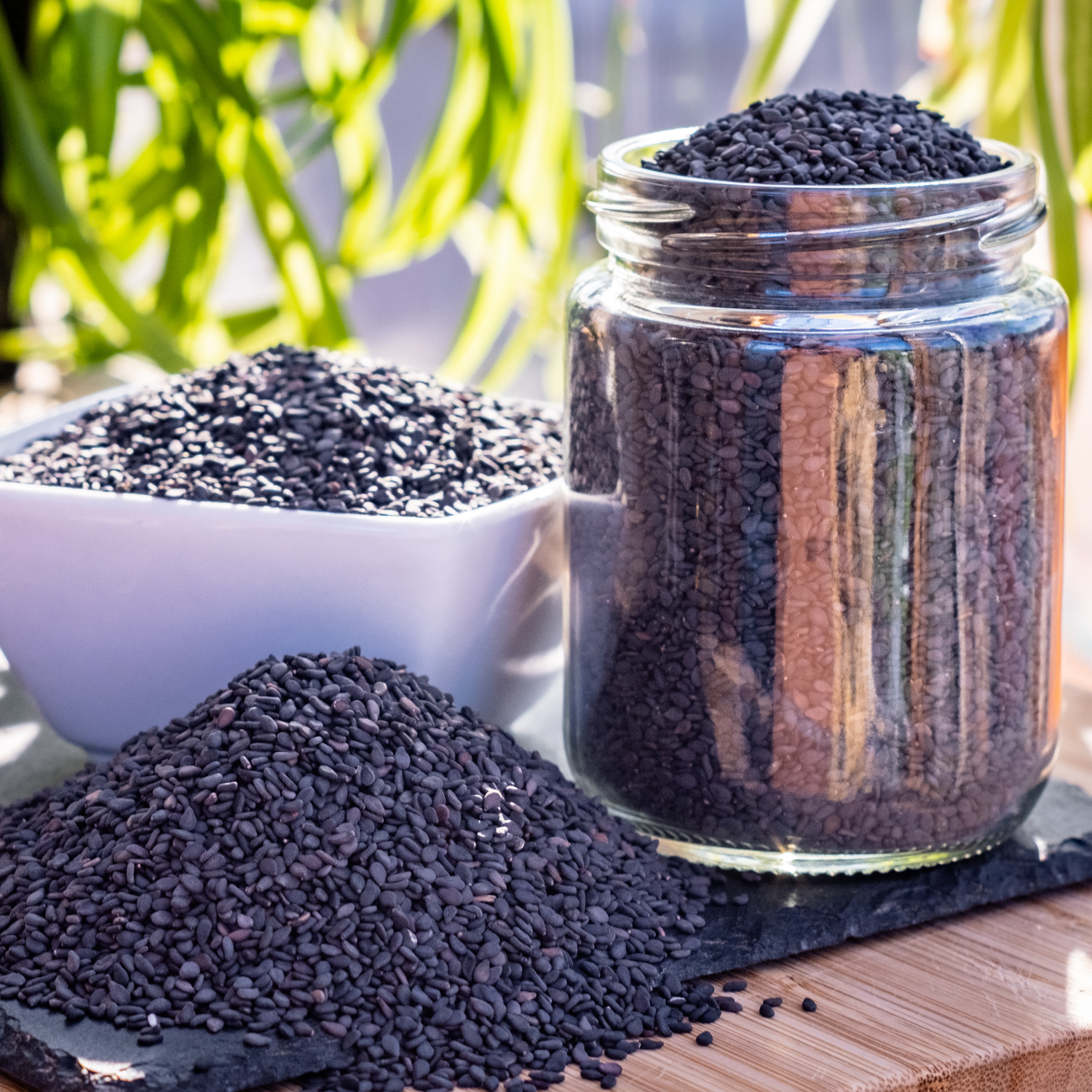
Black Pepper
Share
Black Pepper
Today, “black gold” refers to crude oil. However, once upon a time, the term was used in reference to a spice that today is found in nearly every North American kitchen: black pepper. The spice was so valuable that at least one ancient Egyptian emperor was buried with it, and when the city of Rome was besieged in 410 AD, part of a ransom offered to the attackers was 3,000 lbs of pepper.
Though black pepper is now grown in nearly every tropical region in the world—with Vietnam exporting approximately 35% of the world’s supply—the spice is only indigenous to what is now the state of Kerala on India’s Malabar Coast. Until well after the Middle Ages, the Malabar region was the sole supplier of black pepper to Europe, the Middle East, and North Africa. Though pepper was also grown in Java, Sumatra, Madagascar, Malaysia, and elsewhere in Southeast Asia by the 16th century, these peppercorns were primarily used locally, or exported to China.
Black pepper has been used to season food in India since prehistoric times. It also had medicinal uses, and, according to a book of medicines from the 5th century, was believed to treat constipation, diarrhea, earache, gangrene, heart disease, hernia, hoarseness, indigestion, insect bites, insomnia, joint pain, liver problems, lung disease, oral abscesses, sunburn, tooth decay, and toothaches. Pepper poultices and salves were even recommended to treat eye problems. This likely did more harm than good—imagine applying pepper directly to your eye!
Pepper wasn’t exclusive to India for very long. In fact, the spice must have reached Egypt at some point before 1213 BC, as that was the year that the Egyptian pharaoh Ramses II was buried with peppercorns in his nostrils. The spice was available to the extremely wealthy in ancient Greece, and, thanks to more direct trade routes, became more common, though still expensive, in ancient Rome. A 3rd century Roman cookbook uses black pepper in roughly one third of its recipes, and 18th century English historian Edward Gibbon wrote that the spice was “a favourite ingredient of the most expensive Roman cookery.”
After the fall of Rome, black pepper travelled over Arab-controlled trade routes to the Mediterranean, and then via the Venetians and Genoese to the rest of Europe. In fact, the rise of Venice and Genoa as powerful city-states was largely due to the profits of the spice trade. The great distance and number of middlemen involved in transporting pepper from the Malabar region, as well as the Italian monopoly on the pepper trade, ensured that black pepper remained a luxury good affordable only to Europe’s elite throughout the Middle Ages.
Despite the cost, pepper was popular, and dodging the Italians’ high prices was a driving force behind the European search for new sea routes to India. So, while we can’t place the entirety of the blame for European colonialism on black pepper, seeking a more direct and less expensive route to the spice was a factor in the explorations of the likes of Christopher Columbus.
So what, exactly, is this black gold that dominated the spice trade for so long, and still accounted for roughly 20% of global spice imports in 2002? Peppercorns are actually the fruits of the Piper nigrum vine, which grows in tropical areas with high temperatures and long rainy seasons. These berries have very little flesh, and are mostly seed. The “heat” comes from a chemical compound called “piperine.”
Black pepper is actually the entire pepper fruit, harvested unripe, boiled to blacken the skin, and dried. White pepper, which has a different flavour from black pepper, is made from fully ripened berries, which have been soaked in water and have had the skins removed before drying. The jury is still out on which pepper is “hotter,” and this may be a matter of personal taste. That said, while black pepper may dominate most kitchens, white pepper does have a specific culinary role—in predominantly white dishes, white pepper may be preferred. White pepper is also used in many Vietnamese soups and pork dishes. Vanillablossom carries both black and white pepper, so you can try both for yourself!
The region in which pepper is grown impacts the flavour of the peppercorns. Pepper farming is no longer restricted to the Malabar Coast, and vendors and consumers have a range of choices. Available in both whole peppercorn and ground form, Vanillablossom’s black pepper comes from Indonesia. Peppercorns from this region have a strong aroma, which is fruity and smoky, and a slow burn. Vanillablossom also carries Tellicherry black peppercorns. These peppercorns are larger than the rest of the crop and usually only make up 5–10% of the yield. Though they come from the same vines of the same plants, and their size is the only visible difference, Tellicherry peppercorns have a more pungent aroma and a more intense, complex flavour than smaller black peppercorns.
Try Vanillablossom’s black pepper in this black pepper sauce—perfect to serve drizzled over steak!
Ingredients:
2 tbsp canola oil
½ tbsp ground garlic
½ tbsp ground ginger
¼ cup red wine
¼ cup chicken stock
¼ cup oyster sauce
¼ cup soy sauce
1 tbsp black pepper
1 tsp cornstarch
2 tbsp water
Instructions:
Heat the canola oil over medium heat, then add the garlic, ginger, and wine. Allow the alcohol to cook off for two minutes, then add the chicken stock, oyster sauce, soy sauce, and black pepper. As the sauce returns to a simmer, mix the water and cornstarch together to form a slurry. Once the sauce is simmering, stir in the slurry. Let simmer for two more minutes. Drizzle over desired meat to serve.
Not a sauce fan? To spice up your meat rub, try using Vanillablossom’s Tellicherry peppercorns.
Ingredients:
2 tbsp coarsely ground Tellicherry peppercorns
1 tbsp salt
1 tbsp ground onion
1 tbsp ground garlic
1 tbsp dehydrated bell pepper, red or green
1 tsp dried oregano
1 tsp parsley flakes
½ tsp dried thyme
¼ tsp dried rosemary
Pinch cinnamon
Pinch nutmeg
Instructions:
Mix spices together, and rub on chicken, turkey, pork, or beef.
Spicy tip: mix black and Tellicherry peppercorns in your pepper grinder to add some intensity to your table pepper.
Spicy tip: Want to add a little heat to your creamed soup or white sauce? Try white pepper, to maintain the colour of your dish.
Sourced by Natasha Simpson

